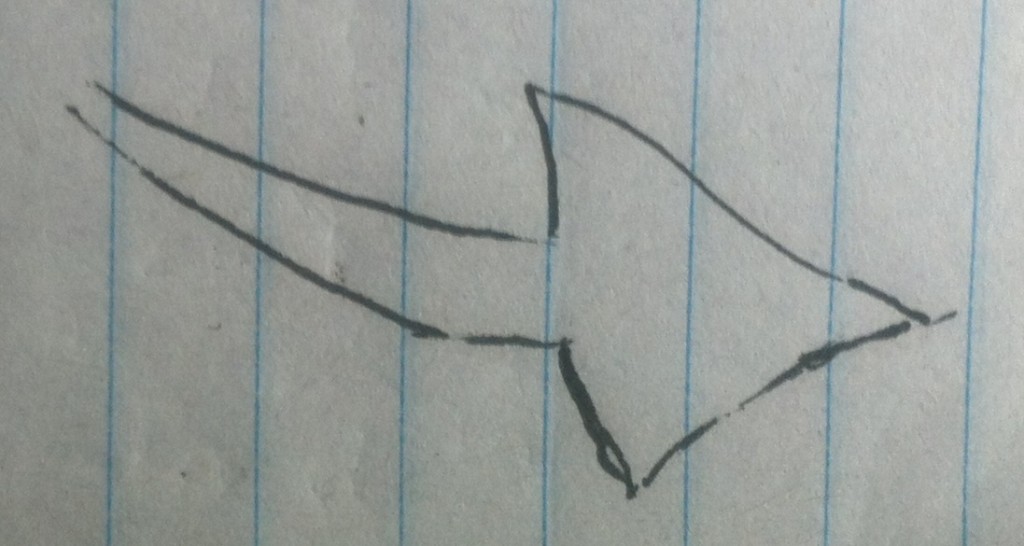An eyewitness recently made it clear that the flying creature she had recently observed had a long tail and a horizontal tail vane at tail’s end. I have interviewed this lady several times, face-to-face, during the past two weeks. She appears highly credible.
I brought up the subject of tail-vane orientation, and she was positive that it was held horizontally. This is an obscure subject, yet she quickly answered my questions about that detail. It seems unlikely to me that she had read anything online about any pterosaur eyewitness describing how the tail “diamond” or flange was oriented. I know of over a thousand web pages and blog posts about sightings of living pterosaurs and the meaning of modern pterosaurs. I recall only one page that mentioned the tail appendage orientation. I have full confidence that she was honestly describing her perception of what she had personally observed, without any influence from anybody else’s description of that detail.
When she first noticed the creature sitting on a telephone line over her head, the ropen (I concluded it was a ropen) was faced away from her, with the end of the tail perhaps eighteen feet away from the lady’s forehead: She had a good view of the end of the tail.
The sighting was in Lakewood, California, on June 19, 2012, at about noon

She estimated the tail was at least four feet long and the structure at the end she called a “triangle” (the anonymous eyewitness drew the above sketch)
Paleontologists generally do not take pterosaur sightings seriously, for they specialize in fossils, not cryptozoology. Most of them, at least in recent years, have taken the view that the tail vane of basal pterosaurs was vertical.
Pterosaur Tail Vane Orientation
According to at least a couple of key eyewitnesses, it is horizontal. Patty Carson was sure of this in the “dinosaur” or “pterodactyl” she had observed in Cuba in 1965; an anonymous eyewitness in Lakewood, California, was sure of this in the “dragon” she had observed on June 19, 2012, at mid-day.




4 Replies to “Horizontal Tail Vane”
Comments are closed.